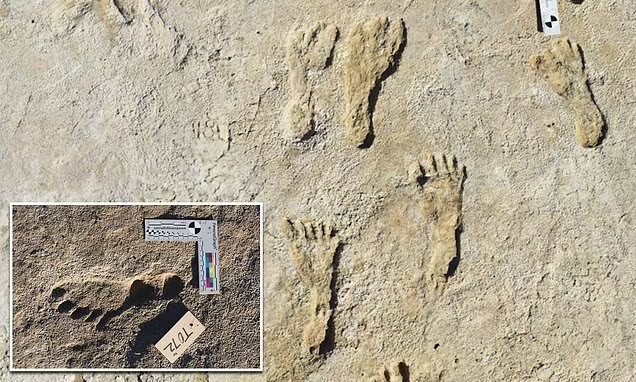A Paradigm Shift in Prehistoric Understanding
Archaeologists have uncovered an extraordinary finding that may revolutionize our comprehension of early human history. Footprints dating back an astonishing 23,000 years have been discovered in North America, directly challenging the established “Clovis First” theory. Previously, it was believed that the first humans arrived in the Americas between 13,500 and 13,000 years ago. This new evidence suggests that human migration to this continent occurred thousands of years earlier than previously thought.
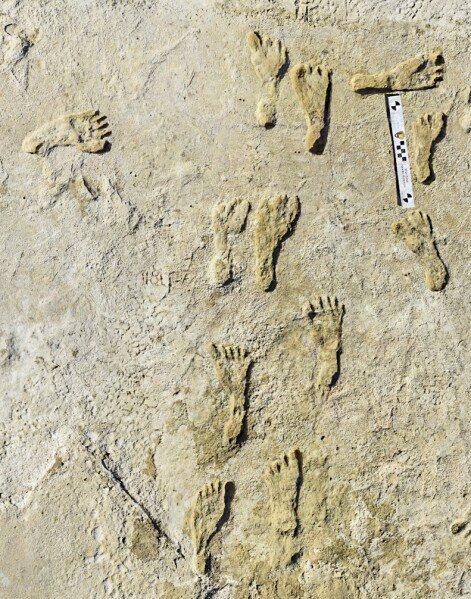
Unearthing Ancient Secrets
In 2009, archaeologist David Bustos made a remarkable discovery at White Sands National Park in New Mexico. Preserved in the mud of an ancient lakeshore, these fossilized footprints offer a tangible connection to the past. Radiocarbon dating of Ruppia cirrhosa, an aquatic ditch grass found within the footprints, determined their age to be between 22,800 and 21,130 years old. This rare find provides insights into the daily lives and movements of our ancient ancestors, highlighting their adaptation to their environment and interactions with the megafauna of that era.
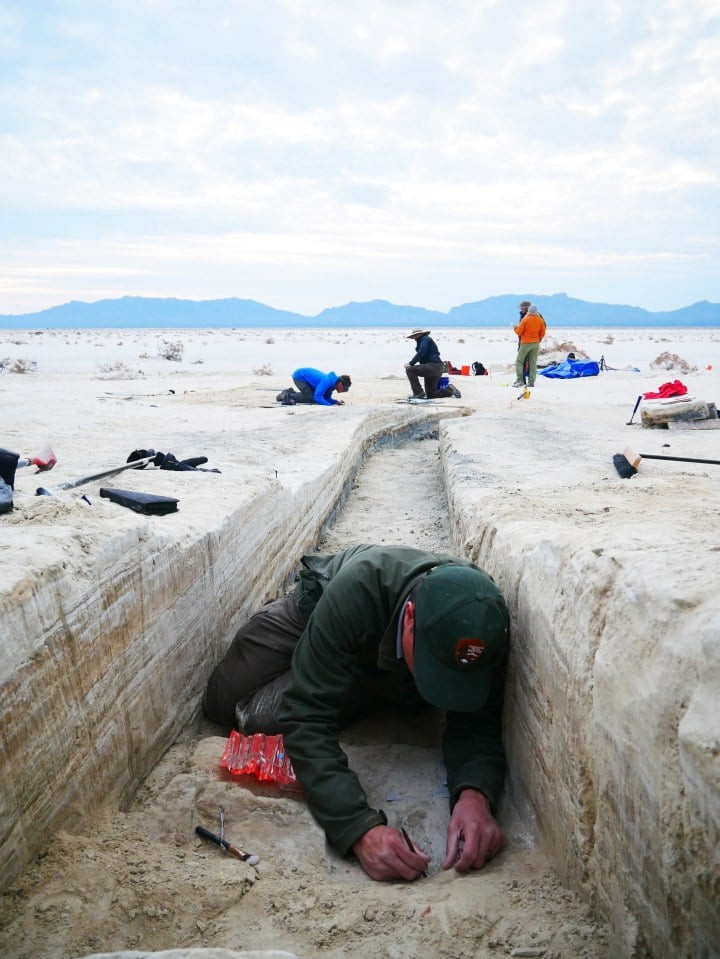
Challenging Established Beliefs
This significant discovery questions the widely accepted “Clovis First” theory, which proposed that the Clovis people were the first to arrive in North America via a land bridge from Siberia around 13,500 to 13,000 years ago.

The new evidence indicates that prehistoric humans were present in the Americas much earlier, possibly even before or during the last Ice Age. This challenges the traditional narrative of how and when the first people migrated to the New World, prompting archaeologists and anthropologists to reassess their understanding of human migration and settlement patterns in the Americas.
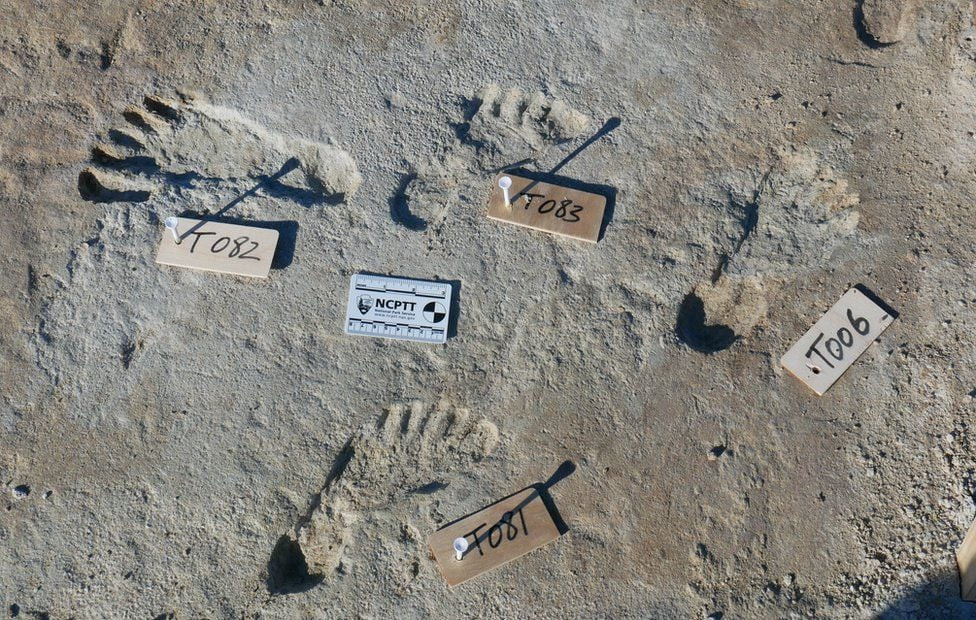
A New Timeline for Human History
Thomas Urban, a research scientist with the Cornell Tree Ring Laboratory, stated, “This new study provides the first unequivocal evidence of a sustained human presence in the Americas thousands of years earlier than most archaeologists thought was likely.” If the dating of these footprints is accurate, it fundamentally alters our understanding of the timeline of human migration and settlement in North America. This discovery has global implications, potentially reshaping our broader understanding of human prehistory and the worldwide dispersal of our species.
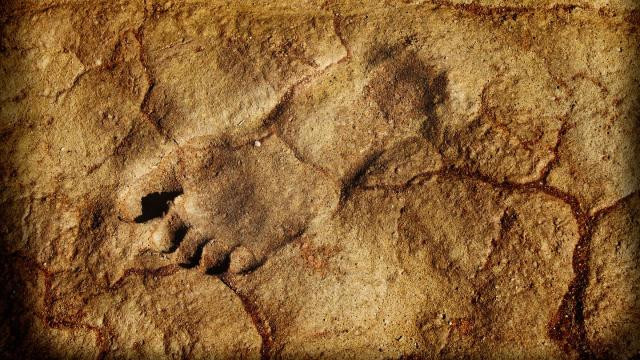
Ongoing Debates and Discoveries
The topic of the “peopling of the Americas” has long been a source of intense debate among archaeologists. Recent findings, such as the 14,500-year-old Monte Verde site in Chile and the 30,000-year-old stone tools in Chiquihuite Cave, Mexico, have already challenged the Clovis First theory. As new evidence continues to emerge, it becomes increasingly clear that the timeline of early human arrivals in the Americas will need to be continually revised, offering fresh perspectives on the complex story of human migration.
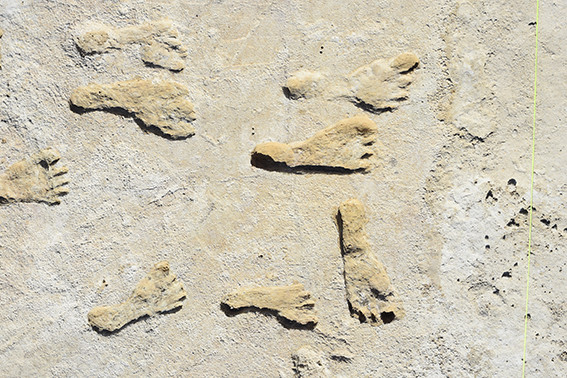
Insights into Ancient Lives
The White Sands footprints provide a unique and invaluable glimpse into the lives of ancient peoples. Experts suggest that this ancient lake was inhabited by humans for around 2,000 years, shrinking over time due to rising temperatures. Notably, many of the footprints were left by children and teenagers, providing a unique perspective on the daily lives of these early inhabitants. This insight into their movements, behaviors, and environmental adaptations is crucial for understanding how these pioneering humans
 thrived in their region.
thrived in their region.
Future Implications
The discovery of the oldest human footprints in North America has the potential to significantly alter our understanding of human history and migration patterns. As further evidence is uncovered, the timeline of early human arrivals in the Americas is likely to continue evolving, offering new insights into the complex journey of our species.
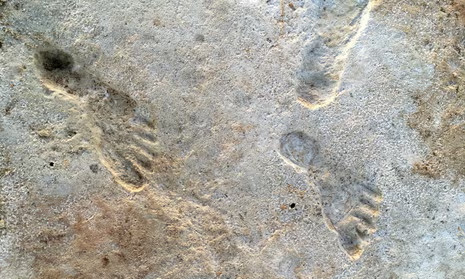
This discovery underscores the importance of ongoing archaeological research and the potential for future findings to challenge and refine our long-held beliefs and assumptions about the past. By embracing these new discoveries, we can achieve a richer and more nuanced understanding of our shared human history and the evolution of our species.



